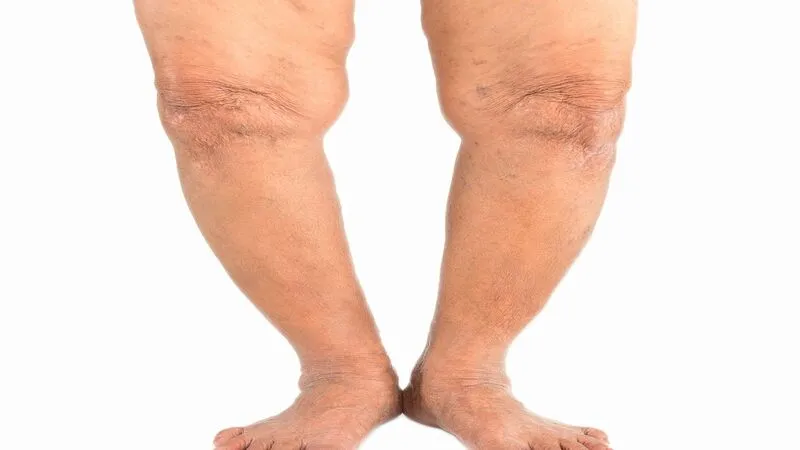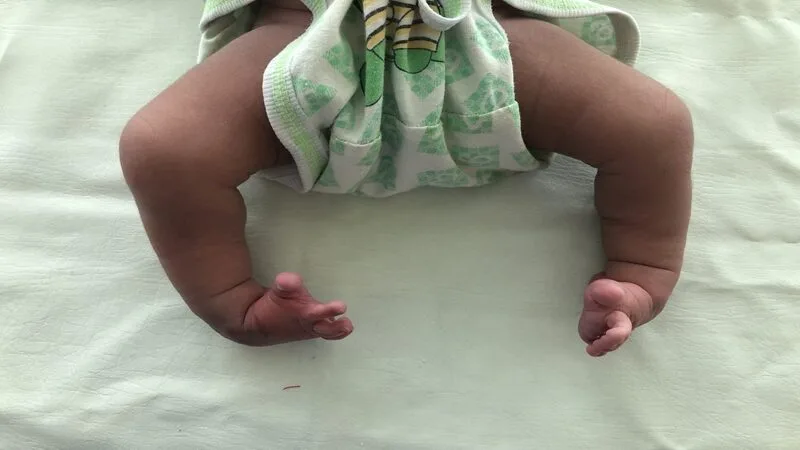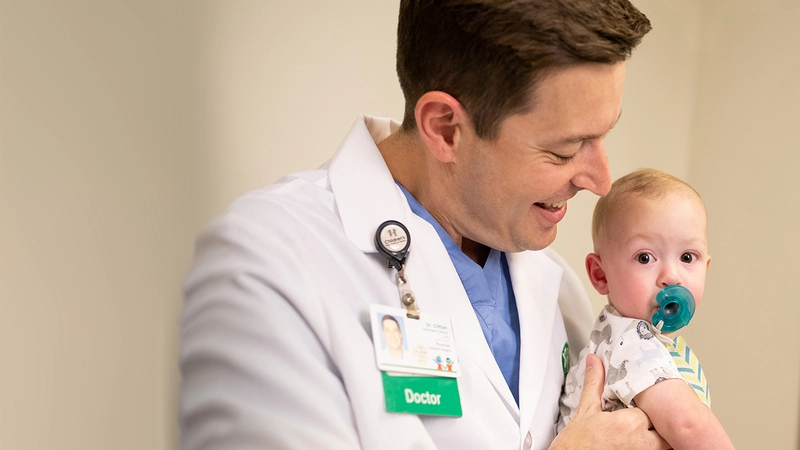Blunt’s disease is a developmental disorder that affects the tibia. This disease causes the lower leg to be turned inward and the lower leg to be bent below the knee.
In this article, we intend to introduce you to this blunt disease and its treatment methods.
What is Blunt’s disease?

Blunt’s disease is a growth disorder in the lower leg (tibia bone), usually called the shin bone. Its characteristic is the bending and bracketing of the lower leg below the knee joint. This disease can affect one or both legs. Some children may experience a shortening of one leg (also called a leg length discrepancy) or an inward turning of one or both legs.
Although the exact cause of this disease is unknown, research has shown that its occurrence is associated with obesity, low levels of vitamin D, and early walking (at 8 to 10 months of age or earlier).
Physical therapists help children and their families manage the symptoms of Blunt’s disease at all stages by teaching the child how to walk with assistive devices and performing strengthening exercises.
However, sometimes this disease is only treated with surgery. In such situations, you will need good doctors in Dubai. They can help you with the treatment of feet in Dubai. These doctors are also perfect for cosmetic foot surgery.
Remember that if you need treatment for claw toe other than your Blunt’s disease, you can trust them.
✔️ Read More: What Is a Heel Spur? The Cause of the Disease and Its Treatment Methods
Blunt’s disease classifications
Blunt’s disease is classified into three groups based on the age of the child:
- Infancy (birth to 3 years old)
- Childhood (4 to 10 years)
- Adolescence (11 years and above)
Blunt’s disease in infants

The blunt disease of infancy occurs in children under 3 years of age who started walking early, were large, or overweight. In these toddlers, repeated pressure on the inside of the tibia slows down the “growth plate” or stops the bone from growing inside the leg. This is as the outer part of the foot continues to grow, thus exaggerating the normal flexion of the bone in the lower leg. “Growth plates” are made up of cartilage that sits at the end of a child’s long bones and causes the child to grow taller by building bone on top of each bone.
There may always be some bending in the feet of children and adults. Knuckles in normally developing babies usually resolve by age 2, when the legs are slightly bent again, and the child will have “cross-knees” during the third and fourth years.
At the age of 7, their legs take on a different shape; the knees seem to turn slightly inwards. At the age of 12, all children’s feet become adult feet. After this stage, the foot’s shape changes very little, although the bones and muscles continue to grow and thicken.
If the bowing of the legs is not normal (i.e., if it does not have the bowing form of a normal baby), Blunt’s disease is likely to be suspected. Your doctor or physiotherapist will help you diagnose your child’s foot’s normal and abnormal curvature.
If you can’t find a good doctor in your area or if you don’t want to risk your child’s life, visit doctors in Dubai. Besides treating your Blunt’s disease, they can also help you with the treatment of rheumatoid arthritis.
✔️ Read More: Electromyography; Definition and Benefits
Blunt’s disease in childhood and adolescence

Blunt’s disease of childhood affects children aged 4 to 10 years. The juvenile blunt disease occurs in children aged 11 years and older.
This form of the disease, which affects older children, is less common than the infantile form and typically affects older adolescents, boys more than girls, and especially boys with vitamin D deficiency. The upper and lower leg bones are often affected in both forms of the disease.
The main difference between these two groups (children and teenagers) is the age of the child when the legs bend and the amount of remaining growth in the child. Doctors can estimate the amount of remaining growth in children using radiographic images.
Symptoms of Blunt’s disease

This disease may affect one or both legs. Its most common symptom is bending of the lower leg from below the knee to the ankle. As the child grows, this bending gradually worsens. In older children, the femur may be affected in addition to the tibia.
A child may not feel any symptoms, but teenagers may complain of pain inside the knee joint and lower leg. A bent leg’s appearance may be the disease’s first noticeable symptom. In addition, the way the child walks seems different. The child may limp or stumble frequently.
The main difference in the nature and treatment of this disease is the age of the child when the unusual bending of the foot is identified and the amount of time left for the child to develop normally.
✔️ Read More: What Is Physiotherapy? Benefits and Applications
The cause of Blunt’s disease

The exact cause ofthis disease is still unknown. But some researchers believe that this disease occurs under the influence of several important factors (genetics, acquired and mechanical factors).
Premature walking in children can also be considered as one of the effective causes of Blunt’s disease.
The high weight of children can also put pressure on the tibia bone and cause different deformities in their movement organs.
Diagnosis of Blunt’s disease

This disease is diagnosed based on a physical examination by a pediatric orthopedist and taking feet radiographs. The doctor examines the child’s body shape and most of his legs and observes how the child walks. The doctor measures the distance between the child’s knees in a standing position and with the legs together. More tests will be needed to see if there is too much space between the knees.
The doctor also prescribes radiographic images because, with these types of images, the bending of the bones can be seen more clearly. In addition, the radiograph allows the doctor to confirm (or reject) the diagnosis and assign a number from 1 to 5 to indicate the stage of the disease. Stage 1 is the mildest form, and stage 5 is the most advanced form of the disease. The doctor may also request a blood test to determine the vitamin D level in the blood.
✔️ Read More: Haglund’s Deformity; How To Diagnose and Treat It
Treatment of Blunt Disease

The aim of treating this disease is to correct the deformity and overall balance of the legs. We are referring to 3 treatment methods for Blunt’s disease.
Use of braces
The treatment of this disease depends on the child’s age and stage, but a physical therapist will help you through all the steps. Brace treatment is always considered in children under 30 months and in the initial stage of the disease (first stage).
The brace your doctor prescribes is called an HKAFO (Hip-Knee-Ankle-Foot Orthosis) or KAFO (Knee-Ankle-Foot Orthosis) and helps redistribute forces on the growth plate to promote normal growth.
Braces are usually made by a brace maker (orthodontist) after taking a mold or computer scan of the foot to take precise measurements. Your physiotherapist will teach you and your child how to put on the brace and how to protect the skin. The physiotherapist also helps the child learn how to walk with the brace and maintain balance.
Assistive devices may also be needed, such as a child-sized wheeled walker or crutches. The physiotherapist teaches the child how to walk safely and without any danger with the help of a walker or cane.
This brace should be worn for about 1 to 2 years to improve the shape of the leg bone. Of course, there should be an improvement in the first year. As the child grows, adjustments are made to the brace. If there is no improvement in the first 12 months, stop using braces, and surgery is recommended.
✔️ Read More: What Is a Ligament? Types of Ligaments and the Causes of Their Injury
Surgery
Surgery may be necessary if the disease has progressed, brace treatment has failed, or the child is older than approximately ten years of age. Several surgical procedures are available to treat Blunt’s disease, including osteotomies and hemiepiphysiodeses (temporary removal of one side of the growth plate).
An osteotomy is a procedure that involves cutting and realigning the bone to place it in a more natural position. This type of surgery usually corrects the deformity immediately.
On the other hand, a hemiepiphysiodesis surgery corrects the deformity of the foot over time. This surgery involves placing plates or clamps on one side of the growth plate to prevent growth on that side. This plaque directs the growth of the bone to a smoother state while the side without the plaque continues to grow.
To maintain proper foot coordination during the healing phase after surgery, the surgeon places another type of brace called a fixator on foot to be used for 8 to 12 weeks.
Physiotherapy
During the time after surgery in the hospital, a physical therapist will teach your child how to walk with a walker or cane. In fact, your physical therapist will teach you how to put proper weight on your foot (so-called weight bearing).
Also, the physiotherapist will teach you and your child special exercises to help you keep the leg healthy and regain joint strength and movement. A physical therapist will teach your child how to safely get in and out of bed, use the toilet, navigate stairs and hallways, and get in and out of a car.
After being discharged from the hospital, most patients work with their physiotherapist 2-3 times a week at home or in an outpatient clinic. The physiotherapist helps the child to maintain the strength of the muscles and the flexibility of the tissues around the leg while the bone heals.
In addition, the doctor helps the child to be independent in doing all the daily activities, and precautions for weight-bearing are also considered. Keep in mind that the child can only bear weight on the operated leg as far as the doctor allows. Children are often afraid when the surgeon allows the child to put full weight on the operated leg to help the bone heal. The physical therapist will work with your child to safely increase the amount of weight bearing on the operated leg.
Physical therapists also provide guidance and assistance for walking and leg strengthening for teenagers with Blunt’s disease. As normal adolescent growth occurs, this foot deformity may slowly correct itself.
✔️ Read More: What Is a Tendon? Types of Tendons and the Causes of Their Damage
How is the care after surgery?
After knee surgery, the doctor advises the patient to start walking and exercising as soon as possible. Also, the doctor suggests doing physical therapy sessions to improve the leg’s range of motion and strengthen it to perform daily activities.
It is necessary to take a knee picture every 3 to 6 months to check its condition. After the knee deformity is corrected, the doctor will remove the plate and rehabilitation sessions will be recommended to improve the patient’s condition.
Considering the patient’s age, the doctor asks him to visit the office regularly for at least one to two years after the surgery to perform the necessary examinations so that any possible malformations can be detected early and the treatment process can begin.
Can Blunt’s disease be prevented?
Several studies show that children who are obese are more prone to foot problems such as Blunt’s disease.
Physiotherapists can prevent this disease’s late-onset by teaching overweight children regular exercise programs and fitness exercises.
A weight loss program for overweight children may also be helpful. Because vitamin D deficiency may contribute tois disease, especially in boys, families should always have a thorough checkup by the doctor during routine visits to ensure that the child’s vitamin D levels are adequate.




